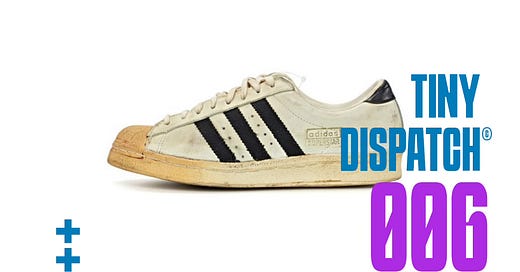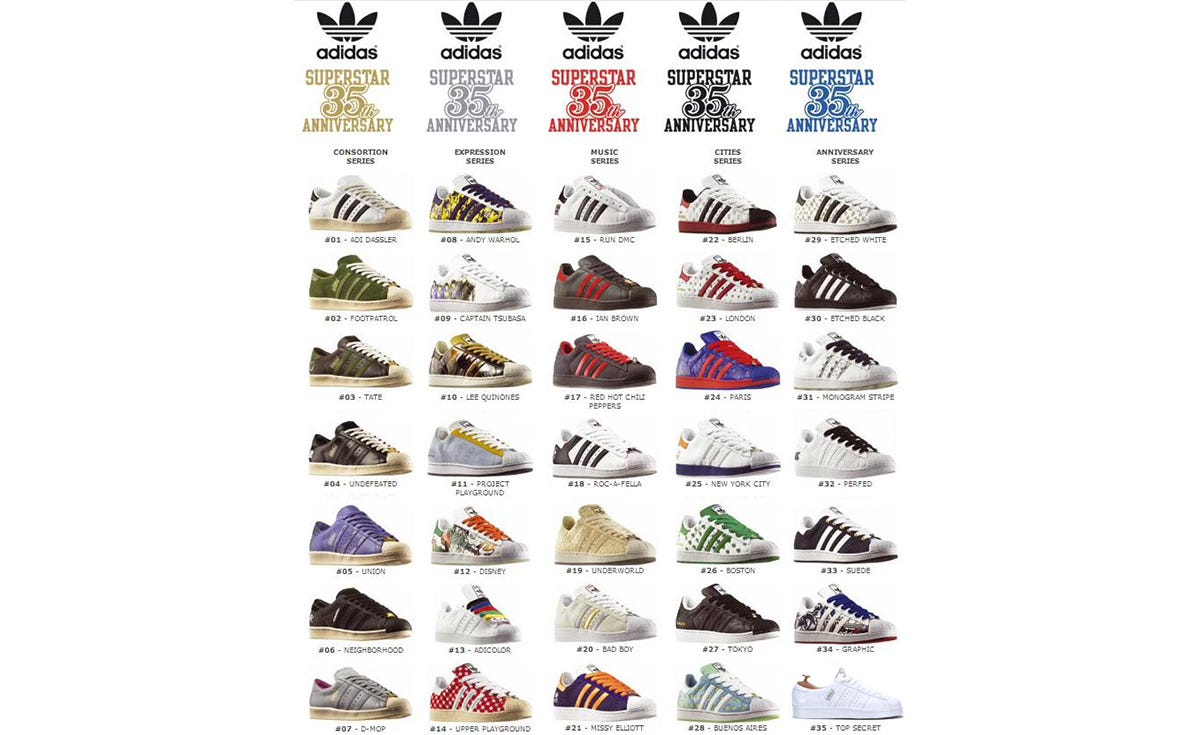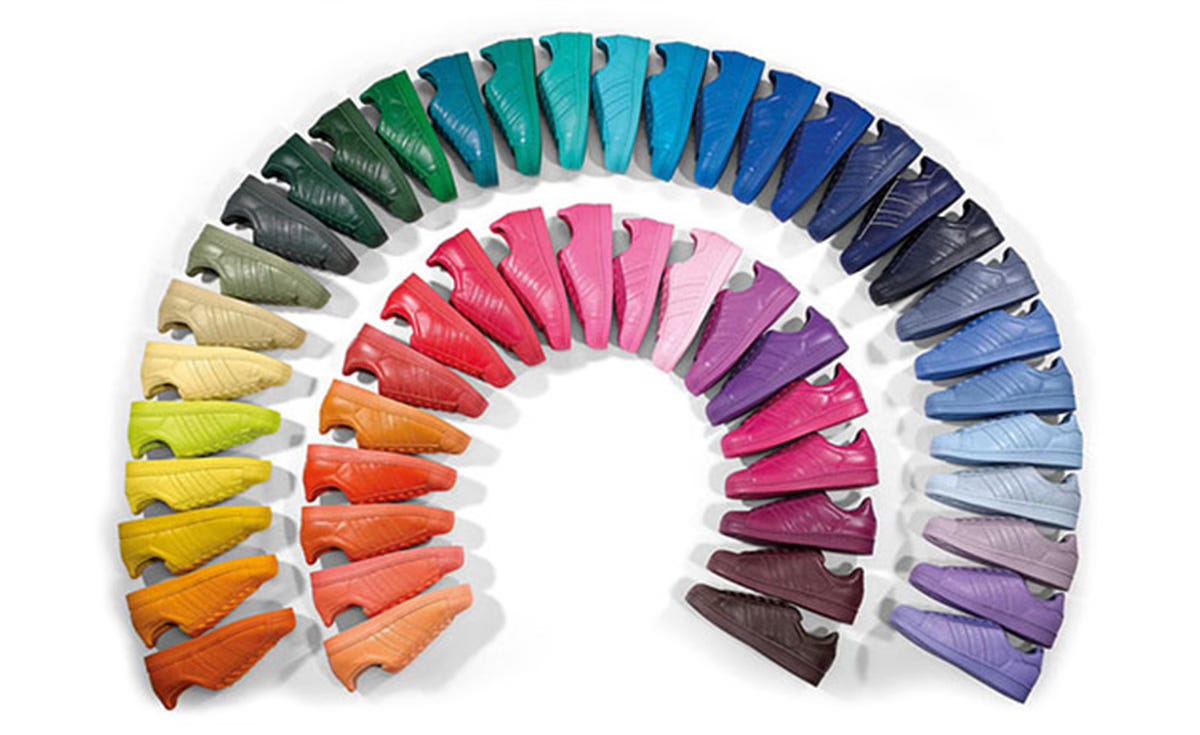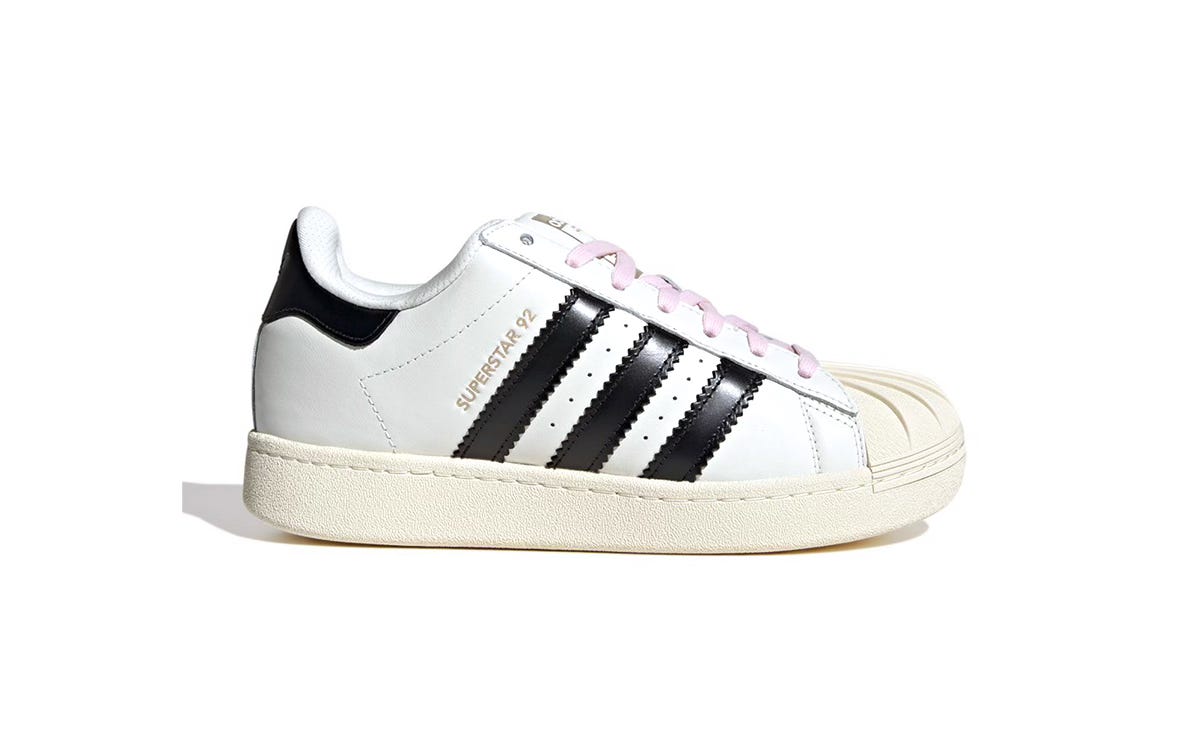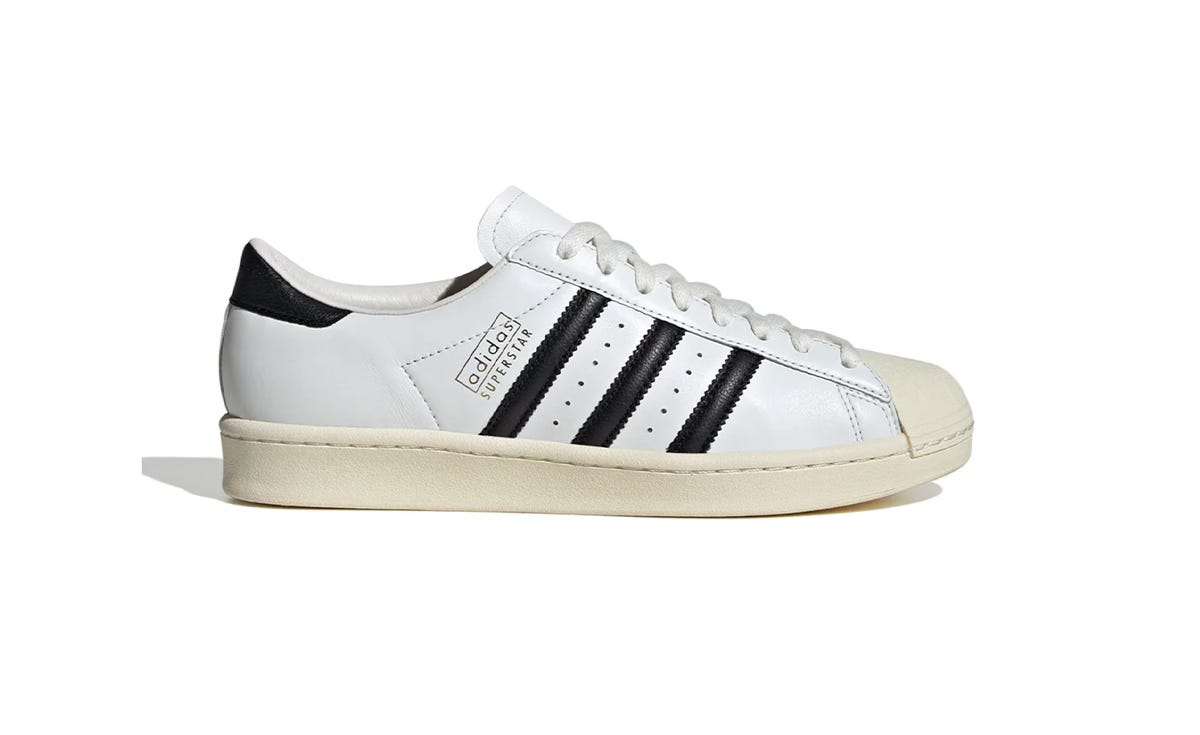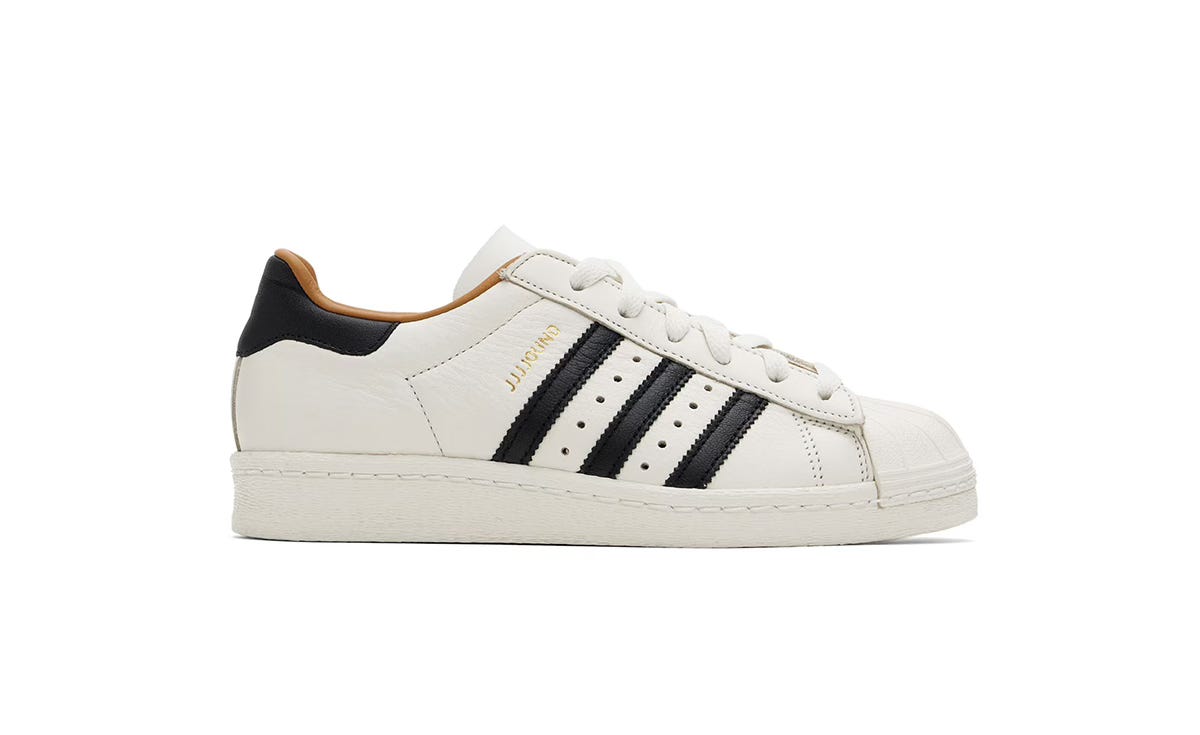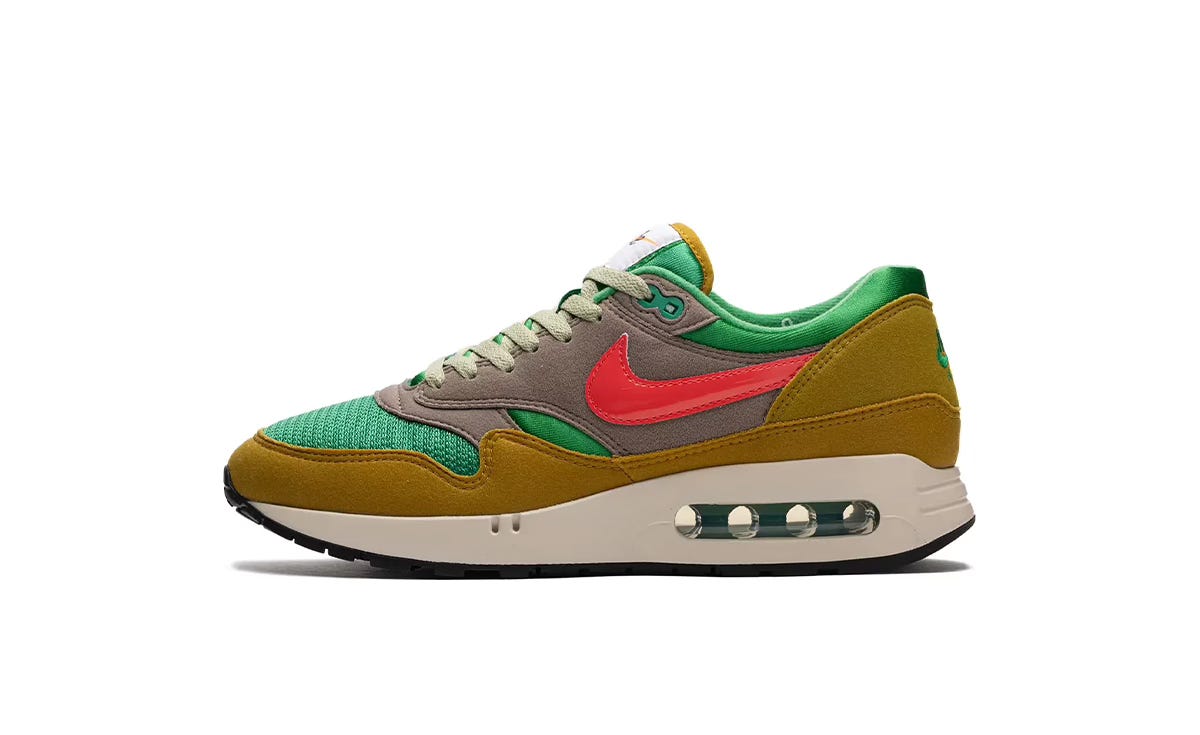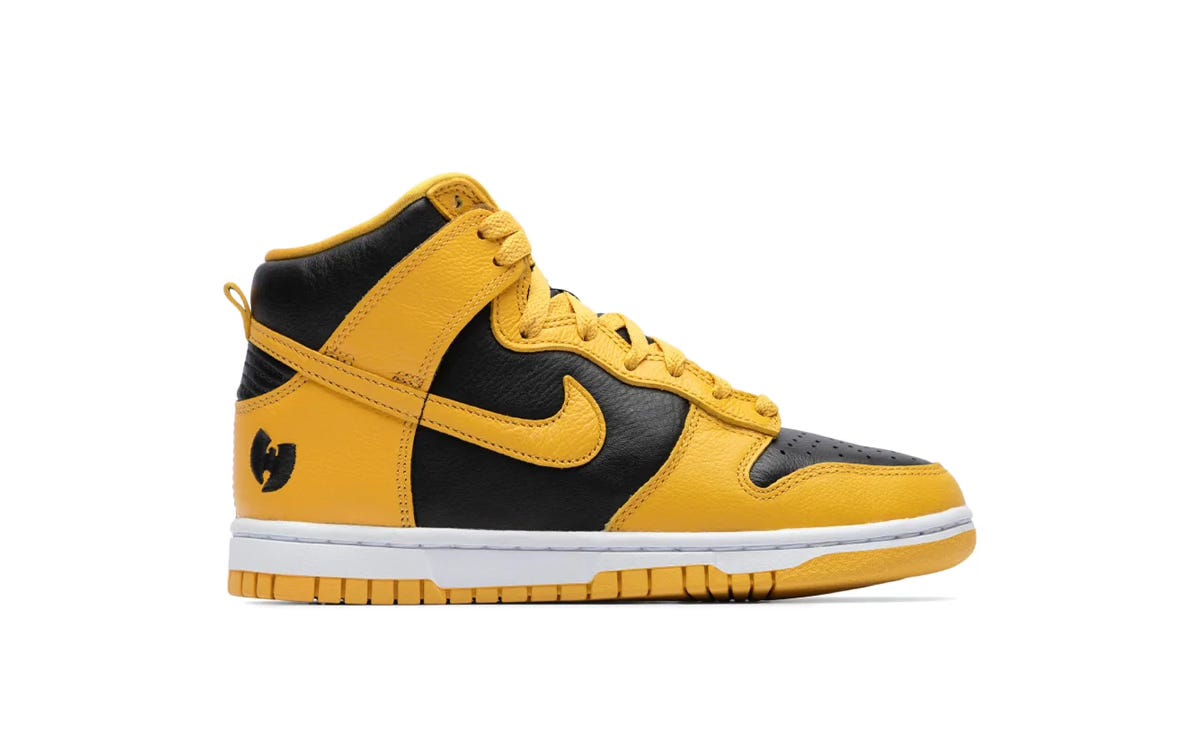adidas had a good run with the Samba—the kind of good that was 90% organic marketing and dominated social media feeds. More than just a viral moment, the Samba reignited demand for low-profile sneakers, helping adidas push other archival silhouettes like the Gazelle and Spezial into the mainstream. But as with all trends, the cycle is winding down. The question is: what’s next for the Three Stripes?
For 2025, adidas Originals has set its sights on reviving an old champion: the Superstar.
The Superstar’s Last Real Moment
Few sneakers can claim as much cultural ground as the Superstar. Originally built for basketball in 1969, it became a hip-hop icon thanks to Run-D.M.C., a streetwear staple through collaborations with brands like BAPE.
But cultural relevance doesn’t always translate to commercial dominance. Despite its deep-rooted legacy, the Superstar has spent the past decade lurking in the background while Kanye West and the Samba took the spotlight for adidas.
adidas tried to ride the wave of low-profile footwear, experimenting with the Taekwondo and even the Ballerina. Now, they’re shifting focus to something bigger, louder, and harder to ignore.
The question is: can adidas manufacture another Samba moment?
adidas’ Last Attempts to Revive the Superstar
This isn’t the first time adidas has tried to force a Superstar revival.
2005: The 35th Anniversary Collection – This was the Superstar’s last true cultural moment. adidas went all in, releasing 35 limited-edition pairs, tapping into streetwear (BAPE, Undefeated), fashion (Neighborhood, Union), and music (Run-D.M.C., Red Hot Chili Peppers). The rollout felt authentic, playing into hype, scarcity, and cultural storytelling.
2015: Pharrell’s 50 Colors Pack – On paper, this had everything—Pharrell’s golden touch, a massive color rollout, and a global push. In reality? Minimal impact. The collection lacked the scarcity and exclusivity that made the 35th-anniversary drop a success. The Superstar was suddenly everywhere, but with no reason to buy in.
Now, in 2025, adidas is taking another shot—but with an entirely different strategy.
How adidas is Engineering the Superstar’s Comeback
Rather than relying on one big play, adidas is attacking from multiple angles:
The Luxury Play: A-TYPE Superstar ($850 USD)
adidas has entered the ultra-premium space with the A-TYPE Superstar, a handmade-in-Italy version featuring cashmere laces, silver-plated lace jewelry, and wooden shoe trees.The CLOT Remix: CLOT x Superstar “Formal Shoe”
Edison Chen’s CLOT is flipping the Superstar into a formalwear piece, merging the sneaker’s DNA with elevated dress-shoe sensibilities alongside his Chinese roots.
The Pharrell Experiment: Three New Shapes
Pharrell is back with the Superstar 72, Superstar 82, and Superstar 92—each remixing the silhouette to reflect a different era of sneaker design. The Superstar 92 or Double Wide takes cues from ’90s snowboard boots, turning the Superstar into an oversized, puffy silhouette.The OG: Made in Germany
To honour its roots, adidas takes it back to its hometown with a Made in Germany edition of the silhouette. Limited to 1,969 pairs worldwide — a nod to the year the Superstar was introduced — this edition features luxe leather and an OG-accurate shape.The JJJound edition:
These three moves are just the start of a larger strategy from adidas. By showcasing the versatility of the Superstar—from luxury craftsmanship to complete overhaul of the silhouette—it’s clear that adidas is positioning the icon as more than just a retro sneaker. This push towards elevated design and premium execution isn’t unfamiliar either; we’ve seen glimpses of this before with adidas’ collaboration with Prada.
Does Nostalgia Still Work as a Strategy?
Nostalgia used to be a foolproof strategy in sneakers for the past decade. Bring back a beloved silhouette, seed it to the right people, and watch it sell out. But does that still work in 2025?
Let’s take a quick look at adidas’ main competitor Nike. They have been trying to leverage nostalgia, but recent attempts have felt tone-deaf and uninspired. Instead of reviving past models with smart execution, the brand has misread the market, misunderstanding what made these sneakers coveted in the first place.
Nike’s Grail Revival Strategy: A Series of Misfires
Air Max 1 icons – Reissuing Grails With No Impact
The original Air Max 1 BRS is a grail among collectors, but the 2024 retro is on discount racks. Nike assumed the shoe’s legacy alone would carry it, without any real effort to modernize or reintroduce it in a meaningful way. The execution was lazy—no great campaign, no build-up, no cultural moment to latch onto. The result? A release that felt flat and forgettable.Wu-Tang Dunk Retro (2024) – Who Was This For?
The 1999 Wu-Tang Dunk is one of the most elusive and revered Nike Dunks ever made—a sneaker never intended for mass release. When a "grail" of this magnitude gets reissued, as we’ll likely see with the Air Jordan IV x UNDFTD, we have to ask: Who is this for?While a handful of collectors who’ve long admired the original might appreciate it, the retro completely failed to connect with a new audience. Worse, it undermines the culture by devaluing the hunt—disrespecting those who’ve spent five figures tracking down the ‘99 pair. Some retros make sense. This one didn’t.
Galaxy Foamposites (2025) – An Odd, Out-of-Touch Move
In 2012, the original Galaxy Foamposite caused chaos. It was one of the last true camp-out, riot-worthy sneaker releases, marking an era when Foams were a cultural force.But in 2025, Foamposites are barely relevant—and that’s the problem. As a performance basketball shoe, the technology is outdated. That leaves lifestyle appeal, but even there, its global footprint is minimal. On top of that, the Foamposite is an expensive sneaker, making it even harder to justify.
So the real question is: Can the Foamposite be forced back into trend? Or is it simply past its time?
The Superstar’s return isn’t just about nostalgia—it’s a test of whether adidas can dictate culture or if culture still dictates adidas. If the brand can reposition the Superstar in a way that feels fresh, relevant, and aligned with where sneaker trends are headed, it has a chance. But if this is just another boardroom-driven attempt to manufacture hype, it risks fading into the background like so many forced revivals before it.
Can a Trend Be Manufactured?
adidas wants 2025 to be the year of the Superstar, but can a sneaker revival be orchestrated, or does culture have to decide? The Samba’s rise felt organic, aligning with a broader shift in style. The Superstar, by contrast, is being positioned from multiple angles—luxury, high fashion, experimental remixes—but will any of them stick?


